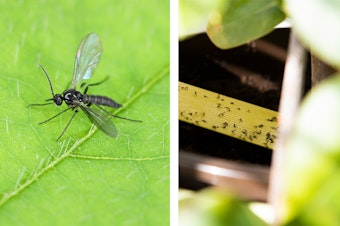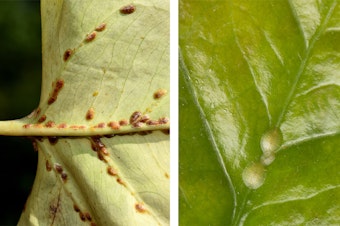 Be Inspired Blog - Arizona
Be Inspired Blog - Arizona

A Guide to Detecting and Defeating 4 Common Houseplant Pests
Houseplants bring life, color, and vitality to our indoor spaces, but they can also fall victim to a range of pests that can compromise their health and beauty. Recognizing these pests early on is crucial for maintaining the well-being of your beloved green companions. In this guide, we'll delve into the identification and management of four common houseplant pests: soil gnats, mealy bugs, scale insects, and spider mites.
 1. Soil Gnats
1. Soil Gnats
Soil gnats (aka fungus gnats), are often mistaken for fruit flies. They are tiny flying insects that hover around your plants and lay eggs in the soil. To identify them:
- Look for small, black or gray flies swarming around your plants.
- Check the soil's surface for small, white, thread-like larvae.
- Water your plants only when the top inch of soil is dry to discourage gnats from laying eggs in damp soil.
Management:
- Allow the soil to dry out between watering to deter egg-laying.
- Place sticky traps near plants to capture adult gnats.
- Use Bonide Systemic Houseplant Insect Control or Summit Mosquito Bits® to kill larvae and prevent infestations.
 2. Mealy Bugs
2. Mealy Bugs
Mealy bugs are notorious for their cotton-like, waxy appearance and their ability to quickly multiply. To identify them:
- Look for white, cottony masses in leaf axils, on stems, and under leaves.
- Inspect for tiny, oval-shaped insects crawling on your plant's surfaces.
Management:
- Isolate infested plants to prevent the spread of pests.
- Remove mealy bugs with Bonide Insecticidal Soap Multi Purpose Insect Control or Bonide Neem Oil. Both products kill on contact and are more effective than removing them manually with a cotton swab dipped in rubbing alcohol.
- Use Bonide Systemic Houseplant Insect Control as a preventative.
 3. Scale Insects
3. Scale Insects
Scale insects are well-camouflaged pests that latch onto plants, often appearing as small bumps on stems and leaves. To identify them:
- Look for round or oval-shaped bumps in various colors, including brown, white, or black.
- Examine the undersides of leaves and along stems for these bumps.
Management:
- Gently scrape off scale insects using a soft brush or your fingernail.
- Apply Bonide Neem Oil or Bonide Insecticidal Soap Multi Purpose Insect Control to suffocate and kill the pests.
- Prune heavily infested areas to prevent further spreading.
- Maintain a healthy environment to help plants naturally resist infestations.
- Apply Bonide Systemic Houseplant Insect Control to prevent future scale insects.
 4. Spider Mites
4. Spider Mites
Spider mites are minuscule arachnids that can cause extensive damage by sucking the sap from plant leaves. To identify them:
- Look for fine webbing on plants, especially on the undersides of leaves.
- Inspect leaves for yellow stippling or white specks.
Management:
- Increase humidity to discourage spider mite activity.
- Spray plants with a forceful stream of water to dislodge mites.
- Apply Bonide Insecticidal Soap Multipurpose Insect Control or Bonide Neem Oil, focusing on the undersides of leaves. You can also use Bonide Mite X to kill spider mites on contact.
- Use Bonide Systemic Houseplant Insect Control to prevent future spider mites.
By regularly inspecting your plants and employing pest control methods when needed, you can help ensure your houseplants thrive in a pest-free home!

